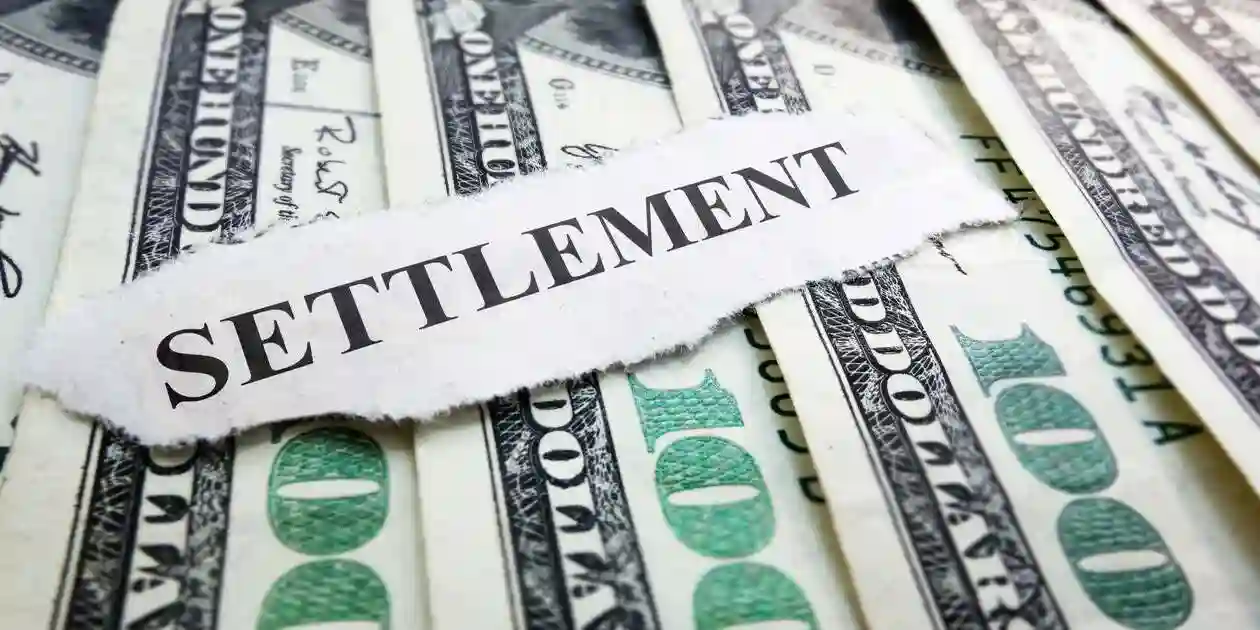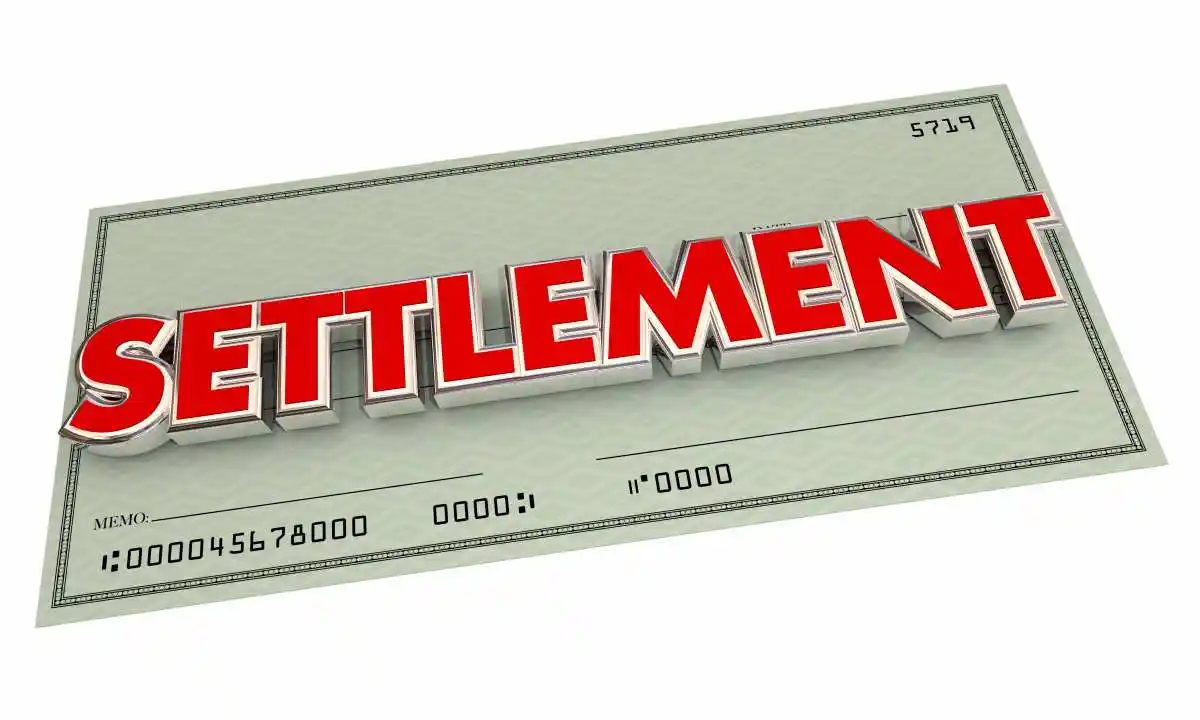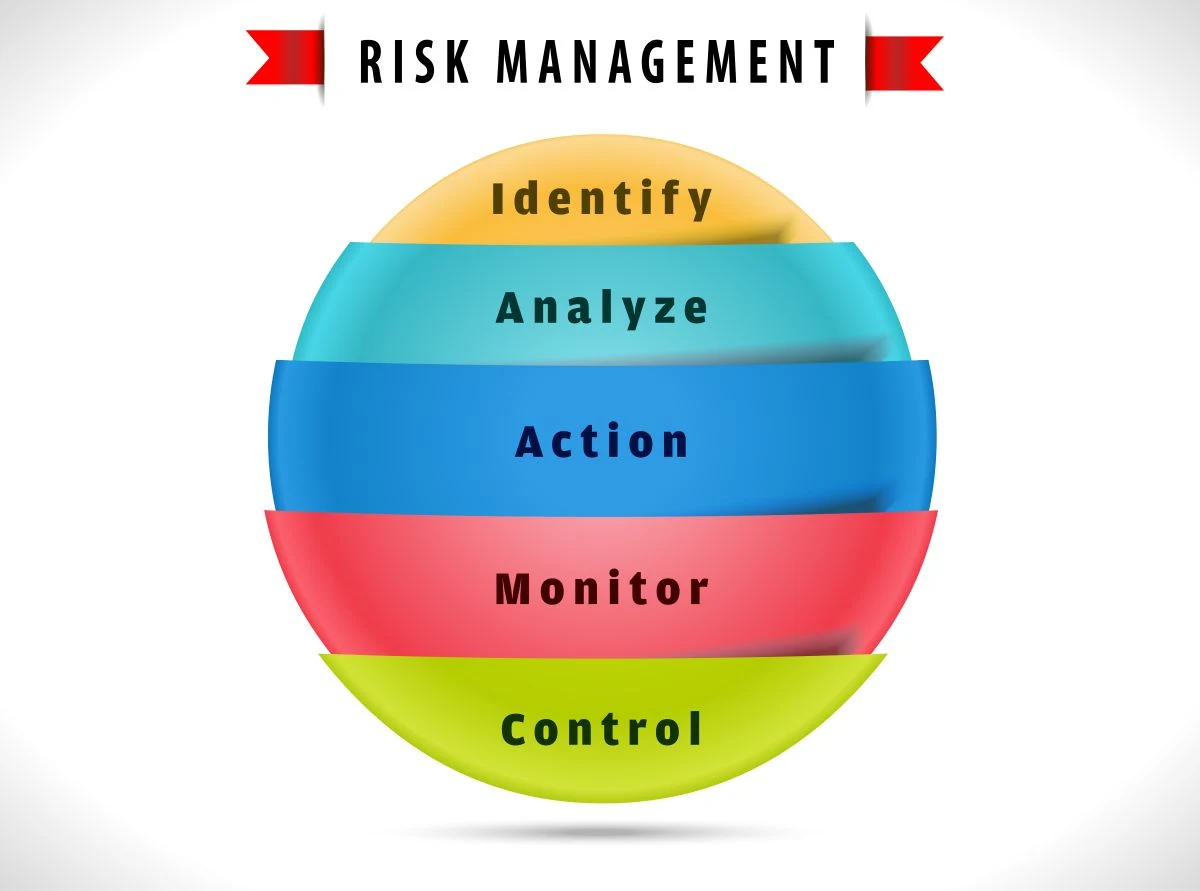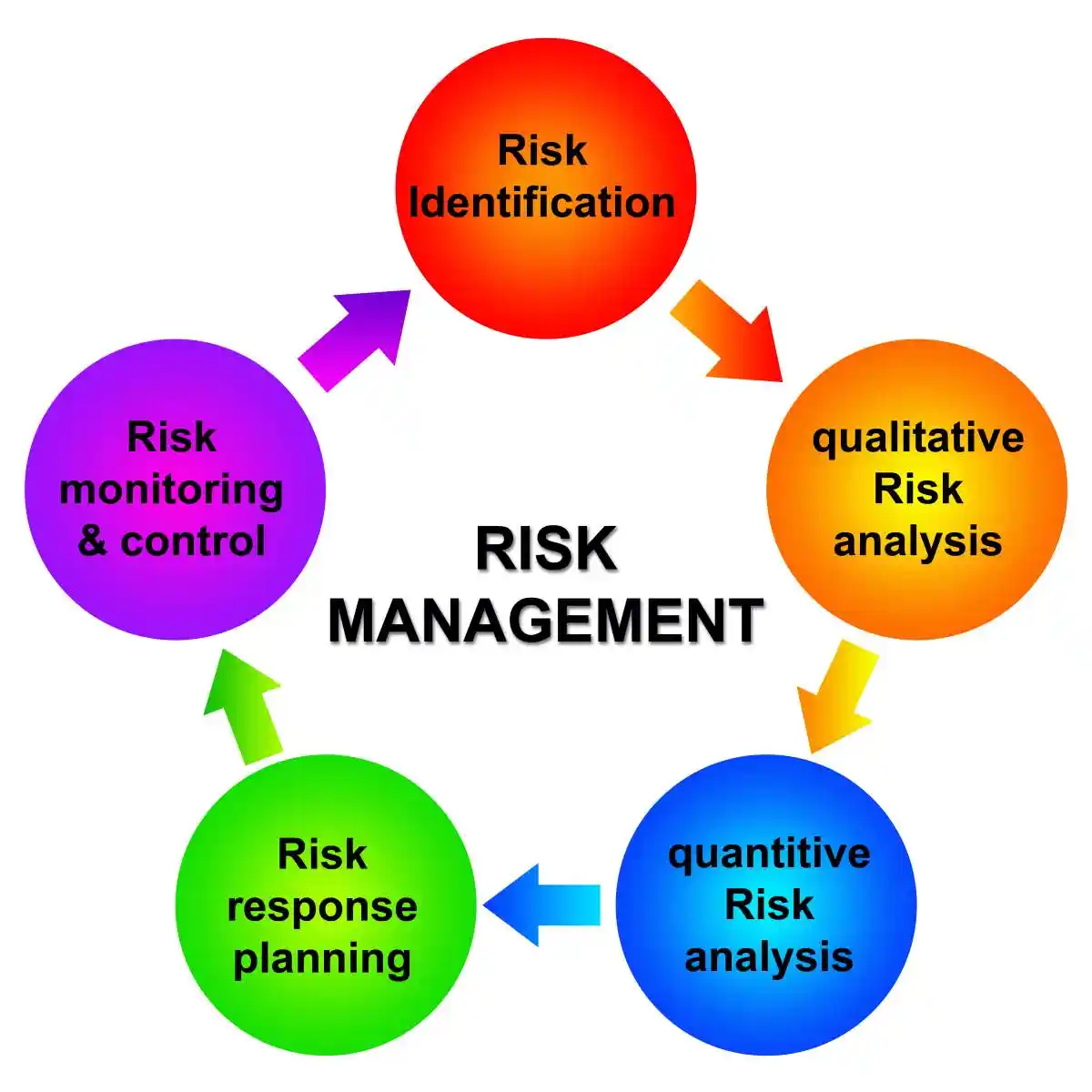Introduction to Settlements in Securities Litigation
- Settlements in Securities Litigation: Are typically cash or stock payouts from a common fund to investors who experienced losses due to fraudulent or misleading statements by a company.
- Settlement Amounts: While most cases are settled due to the high costs of trial, settlement amounts can vary greatly, influenced by factors like the perceived damages to investors, the defendant company’s financial status, and the involvement of institutional investors.
- Court Approval: These settlements require court approval, ensuring fairness to all class members and a proper distribution process.
What are Settlements in Securities Litigation:
- Purpose: To compensate investors for financial losses incurred because a company made false or misleading statements about its finances or future prospects.
- Components: Settlements usually involve the defendant paying a sum of money, issuing stock, or a combination of both into a common fund.
- Distribution: The fund is then distributed to the class members (investors who bought or sold stock during the relevant period) in proportion to their determined losses.
Factors Influencing Settlement Amounts
- Plaintiff-Style Damages: The potential or estimated investor losses are a major factor, with higher perceived damages leading to larger settlements.
- Defendant’s Financial Health: The total assets of the defendant company influence the amount they can afford or are required to pay.
- Institutional Investor Involvement: The presence of institutional investors as lead or co-lead plaintiffs is often associated with larger settlement amounts.
- Accompanying Actions: Cases with parallel derivative actions or investigations by the Securities and Exchange Commission (SEC) may lead to higher settlement values.
- Company Circumstances: Settlements involving companies that are delisted from a major exchange or have declared bankruptcy are often associated with smaller settlement amounts.
The Settlement Process
- Class Notification: After a settlement is reached, a notice is sent to all class members about the settlement and the process to participate.
- Proof of Claim: Class members must file a “proof of claim” by a specific deadline to receive their share of the settlement.
- Court Approval: The court must review and approve the settlement to ensure it is fair to all class members, considering factors like the quality of representation and the adequacy of the relief provided.
The Securities Litigation Process
| Filing the Complaint | A lead plaintiff files a lawsuit on behalf of similarly affected shareholders, detailing the allegations against the company. |
| Motion to Dismiss | Defendants typically file a motion to dismiss, arguing that the complaint lacks sufficient claims. |
| Discovery | If the motion to dismiss is denied, both parties gather evidence, documents, emails, and witness testimonies. This phase can be extensive. |
| Motion for Class Certification | Plaintiffs request that the court to certify the lawsuit as a class action. The court assesses factors like the number of plaintiffs, commonality of claims, typicality of claims, and the adequacy of the proposed class representation. |
| Summary Judgment and Trial | Once the class is certified, the parties may file motions for summary judgment. If the case is not settled, it proceeds to trial, which is rare for securities class actions. |
| Settlement Negotiations and Approval | Most cases are resolved through settlements, negotiated between the parties, often with the help of a mediator. The court must review and grant preliminary approval to ensure the settlement is fair, adequate, and reasonable. |
| Class Notice | If the court grants preliminary approval, notice of the settlement is sent to all class members, often by mail, informing them about the terms and how to file a claim. |
| Final Approval Hearing | The court conducts a final hearing to review any objections and grant final approval of the settlement. |
| Claims Administration and Distribution | A court-appointed claims administrator manages the process of sending notices, processing claims from eligible class members, and distributing the settlement funds. The distribution is typically on a pro-rata basis based on recognized losses. |
Understanding Securities Litigation: Settlements and Legal Processes
- Securities litigation encompasses a variety of legal actions involving the trading of securities, such as stocks, bonds, and other financial instruments. It often arises from disputes over violations of securities laws, including fraud, insider trading, and misrepresentation. The primary aim of securities regulation is to maintain market integrity and protect investors from fraudulent practices that can devastate their financial well-being.
- As markets become increasingly complex, so too does the litigation landscape, which can involve multiple parties and intricate financial data. Modern securities litigation frequently stems from accounting fraud, where companies manipulate financial statements to present misleading pictures of their economic health. Understanding the underpinnings of securities litigation is essential for anyone involved in the financial markets, whether as an investor, a corporate officer, or a legal professional.
- The onset of securities litigation typically involves allegations of wrongdoing that have caused financial harm to investors. This may include misstatements in financial reports, manipulative trading practices, or breaches of fiduciary duty by corporate executives. The legal process can be initiated by individual investors, groups, or regulatory bodies like the Securities and Exchange Commission (SEC). Given the stakes involved, these cases often lead to settlements, as parties seek to avoid lengthy and costly courtroom battles.
- Securities class actions represent the most common form of investor litigation, allowing groups of similarly situated shareholders to collectively pursue claims against companies and their executives. These cases can be daunting due to their technical nature and the high financial stakes involved. The landscape is further complicated by the involvement of various legal standards and precedents that guide the adjudication process.

The Critical Role of Settlements in Securities Cases
- Settlements play a crucial role in securities litigation, providing a mechanism for dispute resolution without resorting to a full trial. They offer a practical solution for both plaintiffs and defendants, allowing them to avoid the uncertainties and expenses associated with prolonged litigation. For plaintiffs, settlements can provide timely compensation and mitigate further financial losses, while defendants can minimize reputational damage and control the resolution’s terms.
- The importance of settlements is underscored by statistical evidence: approximately 95% of securities class actions that survive motions to dismiss ultimately resolve through settlement rather than trial. This overwhelming preference for settlement reflects the practical realities of modern litigation, where the costs and risks of trial often outweigh the potential benefits for all parties involved.
- Settlement amounts in securities litigation can be substantial, ranging from millions to billions of dollars depending on the scope of alleged misconduct and resulting investor losses. Recent high-profile cases have demonstrated the significant financial consequences of securities fraud, with some settlements exceeding $500 million. These substantial recoveries underscore the importance of effective legal representation and thorough case development.
- Furthermore, settlements in securities litigation serve a broader purpose by reinforcing regulatory compliance and market integrity. They often include provisions for changes in corporate governance, enhancing transparency, and preventing future violations. These elements contribute to maintaining investor confidence and promoting a fair and efficient market, underscoring the pivotal role of settlements in the securities litigation landscape.
Top 25 Largest Securities Class Action Settlements
| RANK | COMPANY NAME | COURT | SETTLEMENT YEAR | TOTAL SETTLEMENT ABOUT |
| 1 | Enron Corp. | S.D. Tex. | 2010 | $7,242,000,000 |
| 2 | WorldCom, Inc | S.D.N.Y. | 2012 | $6,194,100,714 |
| 3 | Cendant Corp | D. N.J | 2000 | $3,319,350,000 |
| 4 | Tyco International, Ltd. | D. N.H. | 2007 | $3,200,000,000 |
| 5 | Petroleo Brasileiro S.A. – Petrobras | S.D.N.Y. | 2018 | $3,000,000,000 |
| 6 | AOL Time Warner, Inc | S.D.N.Y. | 2006 | $2,500,000,000 |
| 7 | Bank of America Corporation | S.D.N.Y. | 2013 | $2,425,000,000 |
| 8 | Household International, Inc. | N.D. Ill. | 2016 | $1,575,000,000 |
| 9 | Valeant Pharmaceuticals International, Inc. | D. N.J. | 2021 | $1,210,000,000 |
| 10 | Nortel Networks Corp | S.D.N.Y. | 2006 | $1,142,775,308 |
| 11 | Royal Ahold, N.V. | D. Md. | 2006 | $1,100,000,000 |
| 12 | Nortel Networks Corp. (II) | S.D.N.Y. | 2006 | $1,074,265,298 |
| 13 | Merck & Co., Inc. | D. N.J. | 2016 | $1,062,000,000 |
| 14 | McKesson HBOC Inc | N.D. Cal. | 2013 | $1,052,000,000 |
| 15 | American Realty Capital Properties, Inc. | S.D.N.Y. | 2020 | $1,025,000,000 |
| 16 | American International Group, Inc. | S.D.N.Y. | 2013 | $1,009,500,000 |
| 17 | American International Group, Inc. | S.D.N.Y. | 2015 | $970,500,000 |
| 18 | UnitedHealth Group, Inc | D. Minn. | 2009 | $925,500,000 |
| 19 | HealthSouth Corp. | N.D. Ala | 2010 | $804,500,000 |
| 20 | Xerox Corp. | D. Conn. | 2009 | $750,000,000 |
| 21 | Lehman Brothers Holdings, Inc. | S.D.N.Y. | 2014 | $735,218,000 |
| 22 | Lehman Brothers Holdings, Inc. | S.D.N.Y. | 2013 | $730,000,000 |
| 23 | Lucent Technologies, Inc. | D. N.J | 2003 | $667,000,000 |
| 24 | Wachovia Preferred Securities and Bond/Notes | S.D.N.Y. | 2011 | $627,000,000 |
| 25 | Countrywide Financial Corp. | C.D. Cal. | 2011 |
Recent High Dollar Settlements in Securities Class Actions
High-dollar securities settlements from the last few years include a $490 million settlement by Apple regarding misleading statements on iPhone demand in China. Several other large companies have also recently settled securities lawsuits for amounts over $100 million.
Here Are Some Recent Notable Securities Settlements.
Settlements in 2024
- Apple: $490 million. This settlement addressed allegations related to CEO Tim Cook’s statements about iPhone sales in China in 2018.
- Under Armour: $434 million. The company faced claims of misleading investors about product demand.
- Alphabet (Google): $350 million. This settlement resulted from a data privacy breach case.
- Uber Technologies: $200 million. The settlement involved alleged misrepresentations concerning the company’s IPO.
- Other settlements over $100 million include Rite Aid Corp. ($192.5 million), TuSimple Holdings ($189 million), Envision Healthcare Corp. ($177.5 million), Santander Consumer USA Holdings ($162.5 million), and Pattern Energy Group ($100 million).
- Alibaba Group Holding Ltd.: $433.5 million.
- General Electric Co.: $362.5 million. This resolved a securities fraud suit.
- Kraft Heinz Co.: $450 million.
- Alta Mesa Resources, Inc.: $126.3 million. This was a SPAC-related securities fraud case.
- VMware, Inc.: $102.5 million. This settlement is pending final court approval.
- Wells Fargo: $100 million. This shareholder derivative lawsuit concerns governance issues and is pending preliminary approval.
- Dell Technologies: $1 billion. This payout stemmed from a 2018 stock swap class action.
- Wells Fargo: $1 billion. This settlement payout followed a series of scandals.
- Twitter: $809.5 million. This settlement was disbursed to investors in May 2024.
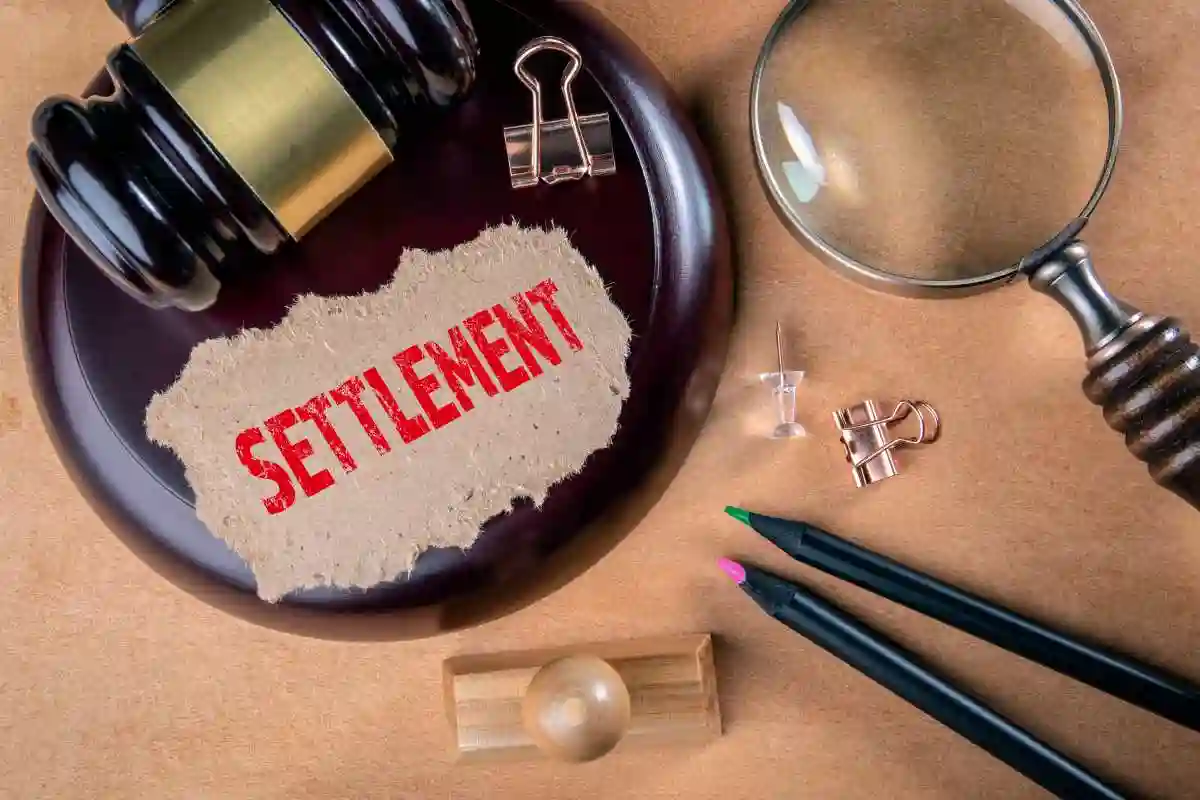
Essential Terms in the Settlement Process
- To effectively navigate the settlement process in securities litigation, it is vital to understand the key terms commonly used. Class action refers to a lawsuit filed by one or more plaintiffs on behalf of a larger group of similarly situated individuals. In securities cases, class actions are frequent due to the widespread impact of alleged misconduct on numerous investors who purchased securities during specific time periods.
- The lead plaintiff represents the individual or entity appointed by the court to represent the interests of the class in a class action lawsuit. Under the Private Securities Litigation Reform Act (PSLRA), the lead plaintiff is typically the investor with the largest financial interest in the relief sought by the class. This appointment carries significant responsibilities, including selecting counsel, overseeing litigation strategy, and negotiating settlement terms.
- Class certification represents a critical procedural milestone where the court determines whether a lawsuit may proceed as a class action. The court must find that the proposed class meets specific requirements, including numerosity, commonality, typicality, and adequacy of representation. Class certification often determines the viability and settlement value of securities litigation cases.
- Class notification involves the court-supervised process of informing potential class members about the litigation and their rights. This typically includes publication notices in financial publications and direct mailings to known shareholders. Effective notification ensures that affected investors understand their options and can make informed decisions about participation.

Motion to Dismiss and Early Case Development
- The motion to dismiss stage represents the first major hurdle in securities litigation. Defendants typically file these motions arguing that plaintiffs have failed to state valid claims under federal securities laws. The Private Securities Litigation Reform Act established heightened pleading standards requiring plaintiffs to plead fraud with particularity and demonstrate a strong inference of scienter (intent to deceive).
- During this critical phase, courts evaluate whether plaintiffs have adequately alleged material misstatements or omissions, loss causation, and scienter. The survival of a motion to dismiss significantly increases the settlement value of securities cases, as defendants face the prospect of expensive discovery and potential trial exposure.
- Statistical analysis reveals that approximately 40-50% of securities class actions are dismissed at this stage, highlighting the importance of thorough case preparation and skilled legal advocacy. Cases that survive motions to dismiss often proceed to settlement negotiations, as the costs and risks of continued litigation become more apparent to all parties.
Institutional Investor Involvement and Leadership
- Institutional investor involvement has transformed the landscape of securities litigation since the enactment of the PSLRA. Large pension funds, mutual funds, and other institutional investors often serve as lead plaintiffs, bringing substantial resources and sophisticated oversight to securities cases.
- Institutional investors typically possess the financial stake and expertise necessary to effectively monitor litigation and ensure that settlements serve the interests of all class members. Their involvement has led to more aggressive prosecution of securities fraud cases and larger settlement recoveries for investors.
- The selection of institutional lead plaintiffs often involves competitive processes where multiple investors seek appointment based on their financial losses and ability to adequately represent the class. Courts generally favor institutional investors due to their substantial stakes and reduced likelihood of conflicts with class interests.
- Institutional oversight extends throughout the litigation process, including review of settlement negotiations, fee arrangements, and distribution plans. This involvement helps ensure that settlements provide fair compensation to injured investors while maintaining appropriate incentives for legal counsel.
Top settlements with institutional lead plaintiffs
Recent high-dollar settlements led by and institutional investor as lead plaintiff:
- Wells Fargo ($1 billion): In 2023, investors reached a $1 billion settlement with Wells Fargo over allegations the bank misled them about its ability to reform itself following a series of sales scandals.
- Dell Technologies ($1 billion): Also in 2023, shareholders settled a $1 billion breach-of-fiduciary-duty lawsuit against Dell, its founder Michael Dell, and private equity firm Silver Lake. The case, brought in a state court in Delaware, alleged that public investors were short-changed in a 2018 transaction to take the company public. It is the largest shareholder-related state court settlement in U.S. history.
- Kraft Heinz ($450 million): In 2023, a $450 million settlement was reached with Kraft Heinz related to the company’s 2015 merger. The lawsuit alleged that the company misled investors about cost-cutting measures, which were extreme and caused supply chain damage that led to a massive write-down in 2019.
- Exelon ($173 million): A 2023 settlement with Exelon addressed a long-running bribery scheme involving its subsidiary, Commonwealth Edison, to influence Illinois lawmakers. The suit alleged that Exelon concealed the corruption from investors.
- McKesson ($141 million): In a case led by the Pension Trust Fund for Operating Engineers, investors settled with McKesson in 2023. The lawsuit alleged that the company knowingly profited from a price-fixing conspiracy among generic drug manufacturers, which it failed to disclose.
- Twitter ($809.5 million): In 2022, investors settled a securities fraud class action against Twitter for $809.5 million. The lawsuit, resolved after six years of litigation, was led by institutional investor clients;
- Valeant Pharmaceuticals ($1.2 billion): In 2021, a $1.2 billion settlement was reached with Valeant, with a Robbins Geller institutional client acting as lead plaintiff. The lawsuit alleged the company misled investors about its business and financial performance.
Factors influencing institutional involvement
- Lower involvement in 2024: Institutional investors served as lead plaintiff in only 39% of 2024 settlements—the lowest rate in the last two decades. This corresponded with lower median “plaintiff-style damages”.
- Mega-settlements continue: Despite the decrease, mega-settlements still drove a significant portion of the total settlement value in 2024, with the largest settlements often involving institutional oversight or leadership.
- Higher involvement in previous years: In contrast, institutional investor involvement was higher in 2022 and 2023, reflecting a consistent link between institutional leadership and larger recoveries.

Three Step Settlement Process
Step 1: Filing and Certifying the Class Action
- A class action lawsuit starts when someone files a legal claim that represents a larger group of people with similar injuries. These cases differ from regular lawsuits where everyone shows up in court. Class actions let representative plaintiffs act for others who might not even know they’ve been harmed.
- Just filing a class action does not mean it will move forward as one. The court must first “certify” the class. This step determines if the case meets the legal requirements under Federal Rule of Civil Procedure 23.
- Judges look at four key requirements to certify a class. The group needs to be large enough to make individual lawsuits impractical – usually over 40 plaintiffs will do. Members must share common legal or factual questions. The representatives’ claims should match those of the class. The representatives must also be able to protect everyone’s interests fairly.
- Courts will check if they can identify potential class members through objective criteria. A judge must also think about whether common questions matter more than individual issues. They will decide if a class action works better than other ways to resolve the dispute.
- Lead plaintiffs or class representatives take on big responsibilities. They must stay involved in the legal process, work together with attorneys, and show up for court proceedings. They also need to assess settlement offers. Their choices will affect all class members, which makes picking them a vital part of the process.
- If certification fails, the lawsuit cannot continue as a class action. Individual plaintiffs can still file separate cases though. Getting certified proves that hundreds or thousands of similar claims can be resolved together efficiently. It is the first big step toward reaching a settlement.
Step 2: Legal Motions, Discovery, and Settlement
- The case moves into the discovery phase after class certification. This crucial investigation period allows both sides to gather evidence. The process starts right after the lawsuit begins. It can last anywhere from six months to several years based on how complex the case is.
- Attorneys collect evidence through these methods during discovery:
- Depositions: Face-to-face questioning sessions conducted under oath
- Interrogatories: Written questions that need truthful answers
- Document requests: Formal requests for relevant records like emails, photographs, and other evidence
- Requests for admission: The opposing party must admit or deny specific facts
- The main goal prevents “trial by ambush” and helps both sides build strong arguments while understanding their opponent’s claims. Defendants often file legal motions that challenge parts of the case during this stage. They might try to strike class allegations before discovery ends.
- Both parties often start settlement negotiations after substantial discovery instead of going to trial. Most class action lawsuits end in settlements. This gives faster resolutions and guaranteed compensation. The negotiations can take months as attorneys work to reach fair compensation. Sometimes experienced mediators help with this process.
- The parties submit their proposed settlement to the court for preliminary approval once they agree on terms. The judge must decide if the agreement is fair, reasonable, and good enough for class members. The preliminary approval phase usually takes 2-6 months.
- Class members receive mailed notices about the settlement after preliminary approval. They normally have 45 days to opt out if they want. These notices explain the lawsuit’s details, eligibility requirements, how to submit claims, and important deadlines.
Step 3: Final Approval and Payout Distribution
- A judge’s fairness hearing marks the final phase of a class action lawsuit. The judge’s role involves determining if the settlement meets fair, reasonable, and adequate standards. Class members get notifications about their rights and settlement options after preliminary approval.
- Class members have several key rights at this point. They can show up at the fairness hearing, raise concerns about settlement terms, or ask to speak. Each member should read settlement notices carefully to check deadlines and procedures. Members who opted out earlier can’t take part in the settlement.
- Judges look at several key factors during fairness hearings. They assess the strength of plaintiffs’ case against proposed recovery amounts. They weigh litigation risks and check for possible attorney collusion. The process includes reviewing class member feedback and checking how much discovery was completed.
- Settlement distribution starts after judicial approval. Courts must approve legal fees, which get deducted before remaining funds reach class members based on their claims.
- Settlements pay out in two ways: lump sums that give you everything at once, or structured payments spread over time. Smaller settlements usually come as lump sums. The distribution timeline can range from months to years for complex cases.
- Some settlement money never reaches class members. This unclaimed money might go to related charities through cy pres awards, state governments, other claimants, or sometimes back to defendants. Class members who think they deserve unclaimed funds can check state unclaimed property offices or the U.S. Courts Unclaimed Funds Locator.
- Knowledge of this final settlement phase gives you the tools to protect your interests and get the most from your potential compensation.
Settlement Negotiation Stages and Mediation
- Settlement negotiations in securities litigation typically occur through structured processes involving multiple stages. Initial discussions often begin informally between counsel, with parties exchanging preliminary damage estimates and evaluating the strengths and weaknesses of their respective positions.
- Formal mediation frequently facilitates productive settlement discussions, with experienced mediators helping parties navigate complex legal and factual issues. Mediators in securities cases often possess specialized expertise in financial markets and securities law, enabling them to understand the nuances of complex fraud allegations and damage calculations.
- The negotiation process typically involves extensive analysis of potential damages, including market-based loss calculations and expert economic testimony. Parties must consider various factors, including the likelihood of prevailing at trial, potential damage awards, and the costs and risks of continued litigation.
- Multi-stage negotiations often occur, with initial discussions focusing on liability issues and later stages addressing specific settlement amounts and terms. The complexity of securities cases frequently requires multiple mediation sessions and extensive document exchange before reaching final agreements.
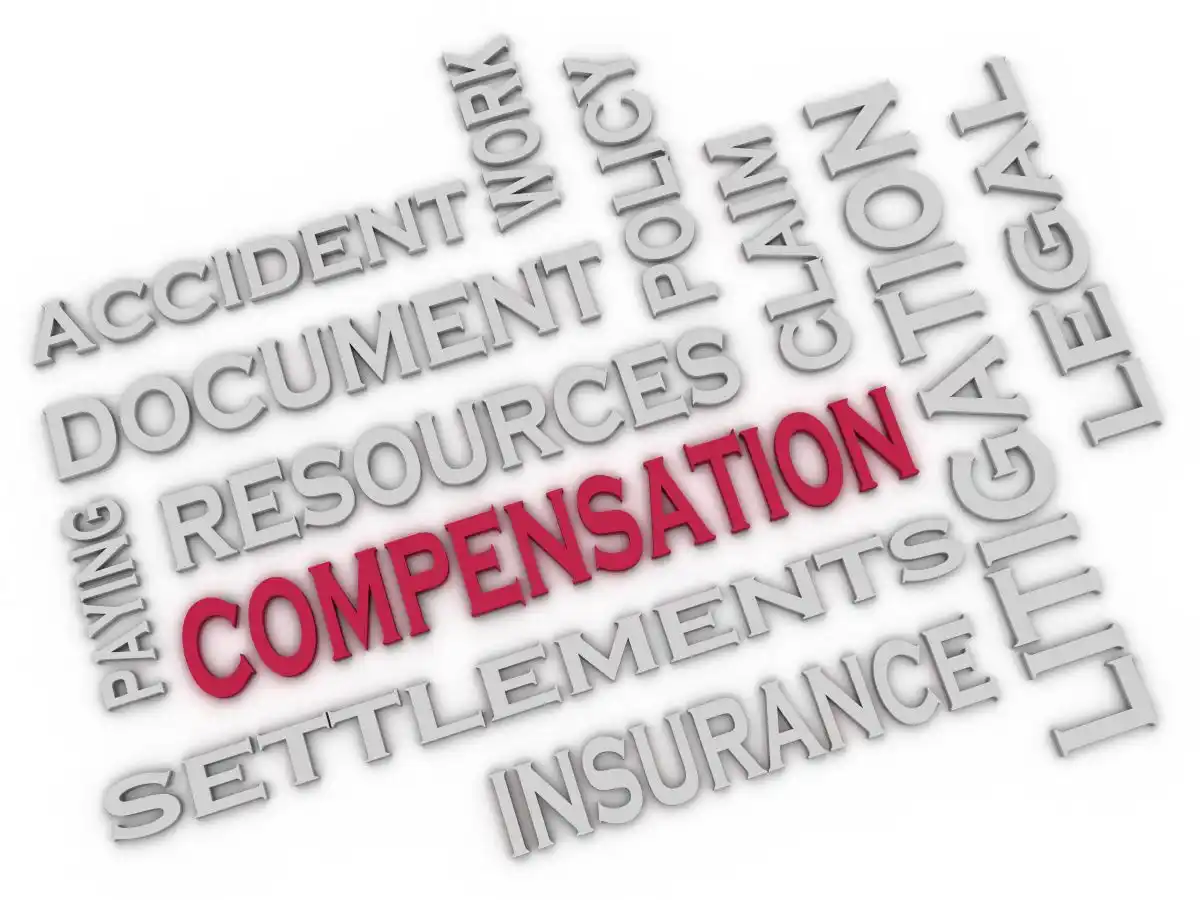
Court Approval and Fairness Hearings
- Court approval represents a mandatory requirement for all securities class action settlements. Federal courts must determine that proposed settlements are “fair, reasonable, and adequate” before granting final approval. This process protects class members who are not directly involved in settlement negotiations.
- Fairness hearings provide opportunities for class members to voice objections to proposed settlements and for courts to evaluate the adequacy of the recovery. These hearings typically involve testimony from lead plaintiffs, counsel, and expert witnesses regarding the settlement’s fairness and the reasonableness of attorney fees.
- The court approval process includes preliminary approval, where courts authorize class notification, and final approval following the fairness hearing. During this period, class members may object to the settlement or opt out of the class to pursue individual claims.
- Judicial scrutiny of settlements has intensified in recent years, with courts requiring more detailed justifications for settlement amounts and fee arrangements. This enhanced oversight helps ensure that settlements provide meaningful compensation to injured investors while preventing excessive attorney fees.
Common Fund Distribution and Proof of Claims
Common fund principles govern the distribution of settlement proceeds in securities class actions. These funds are created through litigation efforts and distributed to class members based on their proportionate losses during the relevant time period.
The proof of claims process requires eligible class members to submit documentation demonstrating their securities transactions and resulting losses. Claims administrators review submissions and calculate individual recovery amounts based on court-approved distribution plans.
Distribution methodologies typically employ “first-in, first-out” (FIFO) or other recognized approaches to allocate settlement funds among class members. These methodologies must be approved by the court and provide fair compensation based on demonstrable losses.
Recovery rates in securities settlements vary significantly based on factors including settlement size, number of claimants, and distribution methodology. Recent studies indicate that recovery rates typically range from 2-10% of investor losses, though some cases achieve higher recovery percentages.
Here’s a breakdown of what influences those rates:
- Plaintiff-style damages. Cornerstone Research, in its annual reviews, identifies “plaintiff-style damages” as the single most important factor explaining settlement amounts. This is an estimate of potential investor losses. Larger cases, measured by plaintiff-style damages, generally settle for a smaller percentage of those damages. For example, in 2024, the median settlement was 7.3% of plaintiff-style damages, but that number jumped to 28.2% for cases with less than $25 million in damages.
- Settlement size. The size of the settlement is a major factor. In 2024, the median settlement amount decreased to $14 million, partially due to a decline in the number of mega-settlements (over $100 million). The defendant’s financial health and available resources also influence settlement size.
- Number of claims submitted. The number of claims filed by eligible investors can dramatically impact the final payout percentage for those who do submit a claim. If only a small fraction of eligible investors file, the recovery percentage for those who do can be substantially higher. For example, after the “Dieselgate” scandal, Volkswagen’s $48 million settlement resulted in nearly 200% recovery for the small percentage of investors who successfully filed a claim.
- Distribution methodology and claim rejection. The methodology for distributing settlement funds and the rate of rejected claims can further reduce the final payout. The Volkswagen case, for example, had a high rejection rate, contributing to the higher payout for successful claimants.
- Lead plaintiff involvement. Historically, institutional investors serving as lead plaintiffs have been associated with cases that result in larger settlements. When institutional involvement decreases, as it did in 2024, it can correspond with lower median damages.
- Type of claim and timing. The type of legal claim and the case’s complexity also play a role. For instance, Securities Act of 1933 claims and cases with accompanying derivative actions can have different settlement characteristics. The stage at which the case settles (e.g., before or after class certification) can also be a factor.
SEC Investigation Processes and Regulatory Enforcement
- SEC investigations often parallel private securities litigation, with regulatory enforcement actions providing additional remedies for investor protection. The SEC’s Division of Enforcement investigates potential securities law violations and can impose civil penalties, disgorgement, and other sanctions.
- Regulatory settlements with the SEC frequently include admissions of wrongdoing and compliance undertakings that strengthen related private litigation. These parallel proceedings can provide valuable evidence and legal precedents supporting investor claims.
- Enforcement statistics demonstrate the SEC’s continued focus on securities fraud, with the agency filing hundreds of enforcement actions annually and obtaining billions in penalties and disgorgement. These efforts complement private litigation in deterring securities fraud and protecting investors.
- Coordination between SEC enforcement and private litigation has become increasingly sophisticated, with regulatory settlements often occurring contemporaneously with class action resolutions. This coordination maximizes deterrent effects and ensures comprehensive remediation of securities law violations.
Accounting Fraud and Financial Statement Manipulation
- Accounting fraud represents a significant category of securities litigation, involving deliberate misstatements or omissions in financial reports. Common schemes include revenue recognition manipulation, expense capitalization, and improper reserve accounting designed to inflate reported earnings.
- Financial statement fraud cases often generate substantial settlements due to the widespread impact on investors and the clear evidence of misconduct. These cases typically involve extensive forensic accounting analysis and expert testimony regarding proper accounting standards.
- Detection methods for accounting fraud have evolved significantly, with sophisticated data analytics and whistleblower programs helping identify potential misconduct. The Sarbanes-Oxley Act of 2002 enhanced internal controls and audit requirements, reducing opportunities for financial statement manipulation.
- Recent developments in accounting fraud litigation include cases involving cryptocurrency companies, technology firms, and healthcare organizations. These cases demonstrate the continued evolution of fraudulent schemes and the need for vigilant investor protection.
Practical Guidance for Investors and Legal Professionals
- Investor protection requires understanding the securities litigation process and recognizing potential warning signs of corporate misconduct. Investors should monitor their holdings for unusual financial results, management changes, and regulatory investigations that may indicate potential securities law violations.
- Legal professionals representing investors must understand the complex procedural requirements and strategic considerations involved in securities litigation. Effective representation requires expertise in securities law, financial markets, and class action procedures.
- Risk mitigation strategies for investors include diversification, due diligence, and monitoring of corporate governance practices. Institutional investors should maintain robust compliance programs and consider their potential roles as lead plaintiffs in securities litigation.
- The future of securities litigation will likely involve continued evolution in fraud detection methods, regulatory enforcement, and case resolution procedures. Technological advances and enhanced data analytics will provide new tools for identifying misconduct and calculating damages.
- Market integrity depends on effective securities litigation and enforcement mechanisms that deter fraud and provide meaningful remedies for injured investors. The continued development of these legal frameworks serves the broader goal of maintaining fair and efficient capital markets that support economic growth and investor confidence.
- Understanding these complex processes empowers investors, legal professionals, and market participants to navigate the securities litigation landscape effectively while contributing to the overall integrity of our financial markets.
Frequently Asked Questions about Class Action Lawsuit Settlements
- Q1. What is the typical timeline for receiving a settlement check from a class action settlement? Generally, if the settlement process goes smoothly, you can expect to receive your check within six to eight weeks after the settlement is finalized. However, in more complex cases, the distribution process may take several months or even years.
- Q2. How are settlement funds distributed among class members in Class Action Lawsuit Settlements? Settlement funds are usually distributed among class members based on their individual claims and losses. If all class members suffered identical damages, they would receive equal amounts. However, lead plaintiffs often receive larger portions due to their active participation in the lawsuit.
- Q3. What percentage of class action lawsuits actually go to trial? Less than 0.4% of class action lawsuits go to trial. The vast majority of these cases are settled out of court, making it crucial for potential class members to understand the settlement process.
- Q4. What are the key criteria for a lawsuit to be certified as a class action? For a lawsuit to be certified as a class action, it must meet four essential criteria: numerosity (typically over 40 plaintiffs), commonality (shared legal or factual questions), typicality (representative claims mirror those of the class), and adequacy (representatives can fairly protect everyone’s interests).
- Q5. Can I object to a class action settlement if I’m not satisfied with the terms? Yes, class members have the right to object to settlement terms. You can attend the fairness hearing, voice your objections, or request permission to speak. However, it’s important to carefully review settlement notices for specific deadlines and procedures for raising objections.
Contact Timothy L. Miles Today for a Free Case Evaluation
If you suffered substantial losses and wish to serve as lead plaintiff in a securities class action, or have questions about securities class action settlements, or just general questions about your rights as a shareholder, please contact attorney Timothy L. Miles of the Law Offices of Timothy L. Miles, at no cost, by calling 855/846-6529 or via e-mail at [email protected]. (24/7/365).
Timothy L. Miles, Esq.
Law Offices of Timothy L. Miles
Tapestry at Brentwood Town Center
300 Centerview Dr. #247
Mailbox #1091
Brentwood,TN 37027
Phone: (855) Tim-MLaw (855-846-6529)
Email: [email protected]
Website: www.classactionlawyertn.com
Facebook Linkedin Pinterest youtube
Visit Our Extensive Investor Hub: Learning for Informed Investors


